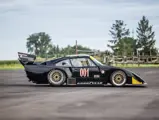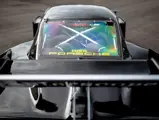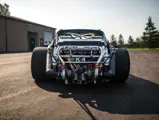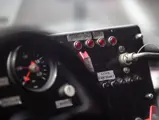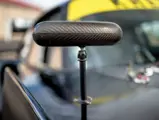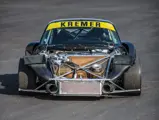
1980 Porsche 935 K4
{{lr.item.text}}
$885,000 USD | Sold
{{bidding.lot.reserveStatusFormatted}}
- The second of two K4s built by the Kremer Brothers
- Derived from the famous 935 “Moby Dick”
- Driven by Ted Field and Danny Ongais of Interscope Racing
- Honeycomb chassis with additional tube framing
- Tremendous vintage racing potential
The ferocious Porsche 935 Group 5 race car was introduced in single-turbo form in 1976, succeeding the similarly powered but difficult-to-manage 934, and proved dominant internationally until outdated in 1983 with the arrival of the new Group C category. During that period, the 935’s engine output leaped from the 485 hp of the original single-turbocharged factory cars to over 800 hp of some of the later twin-turbo 935 variants built by various race teams in the 1980s – of which this is one.
The 935s were constructed on strengthened 930 Turbo body shells and featured a more aerodynamic glass-fiber-reinforced plastic slant-nose with the headlights mounted in the huge front air dam. Widened fiberglass flares were grafted on to the rear quarters to accommodate the larger wheels and tires required to harness the extra power of the turbocharged engine. Norbert Singer, the engineer in charge of the 935 project, specified the larger modular wheels in order to create an even bigger footprint of the tire and enable the immense power to reach the ground. A locked-up spool differential was fitted, along with a huge biplane tail, which also helped to keep the rear of the 935 planted to the pavement.
The 911’s traditional torsion-bar suspension was replaced with coil-over struts and shocks, and multi-adjustable anti-roll bars. Braking was supplied by the same huge ventilated and cross-drilled disc brakes used on the world-beating Porsche 917 prototypes. Uprated center-lock hubs were fitted for quick wheel changes.
Although it received a strong challenge from Ford’s turbocharged Capris, 935s delivered the World Championship of Makes title to Porsche for the 1976 season, and that success carried over into 1977, where 935s filled racing grids and only Lancia and the occasional BMW put up much resistance.
By 1979, Porsche had left the racing of 935s to its customers, and the Kremer Brothers team from Cologne built up their own version, called the K3. The K3 not only won the 24 Hours of Le Mans in 1979, but also ran roughshod through Group 5 contests worldwide for the next three years. So successful was the K3 that the Kremer Brothers shop built up a dozen copies and sold them to other race teams, with John Fitzpatrick winning the 1980 IMSA Camel GT Championship.
Meanwhile, chief racing engineer for Porsche, Norbert Singer, was not content to rest upon his laurels. He was developing a new model, the incredible 935/78, which was dubbed – tongue-in-cheek – “Moby Dick.” Singer had discovered that the Group 5 regulations addressed only the portion of the body structure between the front and rear bulkheads. As far as he was concerned, everything else was free. Using the central section of a 930 tub as a starting point, Singer’s team fabricated light-alloy tubular front and rear structures to carry the engine, transaxle, suspension, and bodywork. The rules also stated that the floor could be raised to the height of the rocker panels, a measure meant to help BMW install larger exhaust pipes in their front-engined cars. Porsche did not use a production floor pan, but built one out of fiberglass. This floor now enjoyed the same ground clearance as the 930, which effectively lowered the entire car by three inches and reduced the frontal area even more. Porsche engineers built a full alloy roll cage and had the front and rear tubular frames mounted onto this. For all practical purposes, this was a completely tube-framed race car, much stronger and more rigid that its predecessor. With a new, wider and much longer fiberglass nose and tail, the bodywork was ultra-sleek, delivering greater maximum speed on Le Mans’ long Mulsanne Straight.
In 1980, both Reinhold Joest and Kremer were developing their own versions of Moby Dick, using a new 935-based four-valve flat-six of 3.2 liters with water-cooled cylinder heads which developed 800 bhp for qualifying, but a conservative 750 bhp for racing. The Kremer’s design was called the K4. Just two were constructed; the first, K4-01, was driven by Bob Wollek to win the German National Championship. It was later sold to John Fitzpatrick, who won several races in America.
Offered here is the second chassis, which was sold to Ted Field’s Interscope Racing team to be shared by Field and Danny Ongais, who were enjoying good results with their 935 K3s. K4-02 was held instead as a back-up. In 1981, this car ran several races in IMSA’s GTX category. The following season, K4-02 started 9th at Daytona in the Prototype class, but Field dropped out on the 55th lap with engine issues. Field and Ongais placed 3rd at Mosport – at which time Field also acquired two Lola T600s and in 1983 this K4 was sold to Vasek Polak, who stored it in California.
In 1997, K4-02 was acquired by Michael Lauer who tasked Kevin Jeannette at Florida’s Gunnar Racing, to fully prepare it for racing, including installation of a 962 engine. After several races, Lauer sold the K4 to Marshall Field, Ted Field’s nephew, for vintage racing. Marshall Field gave the car to the late Bob Akin at Hudson Historics with spare-no-expense instructions to completely transform it into a modern and better version of the already awesome car. In a 1998 letter to Maurer, Akin described the K4 as far superior to the K3, and urged him to install a twin-turbo 935 powerplant from Porsche Motorsport North America. The central tub was strengthened by having honeycomb aluminum cut and bonded into the floor. A Salisbury differential was installed, along with Penske triple adjustable shocks. A Motec dash and telemetry system with download interface and data logger was installed. In 2002 K4-02 was offered for sale and acquired by the current owner the following year.
Today, Porsche-Kremer 935 K4-02 is offered in its Interscope Racing livery as driven by Danny Ongais. GT-1 rear-view mirrors have been mounted, along with new front winglets and front splitter for improved aero. It is supplied with a quantity of spares and historical documentation. As fast as a later Group C 956 or 962, this machine represents the last Porsche-based racing design recognizable as a production sports car. After a mechanical re-commissioning, it would be eligible for all major vintage racing events, or would be a wonderful addition to any collection of ultra–high-performance automobiles.











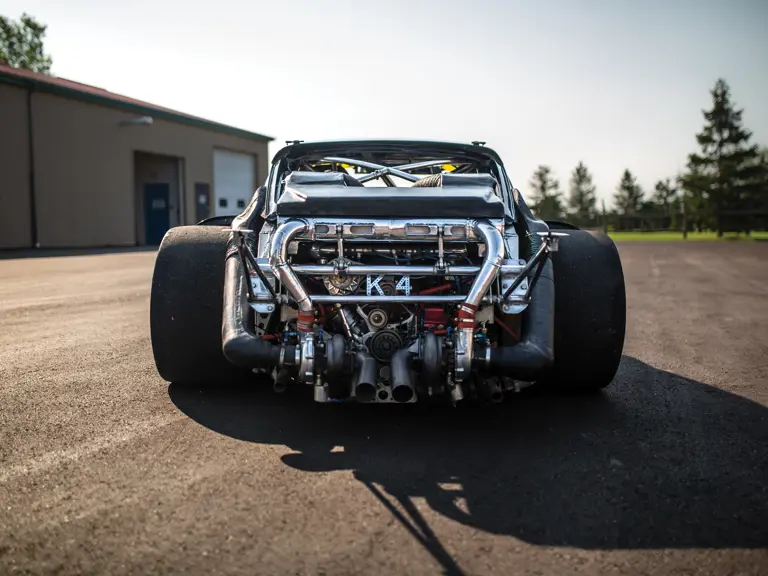
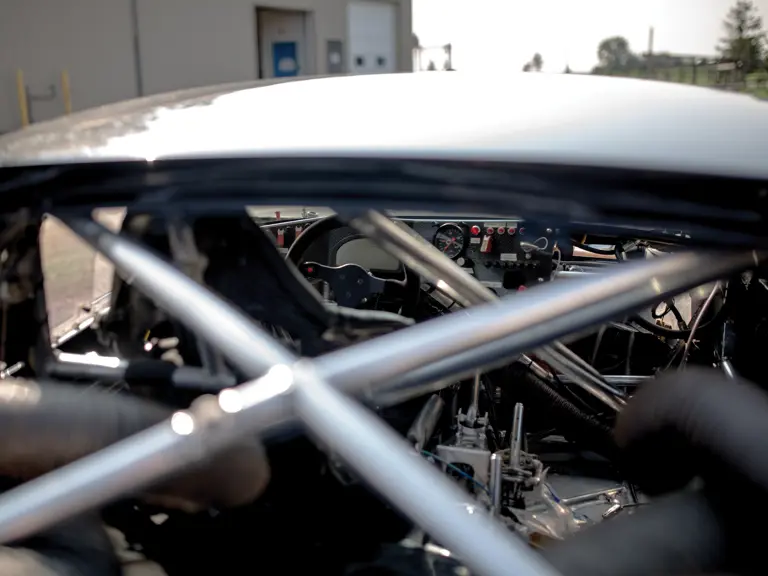
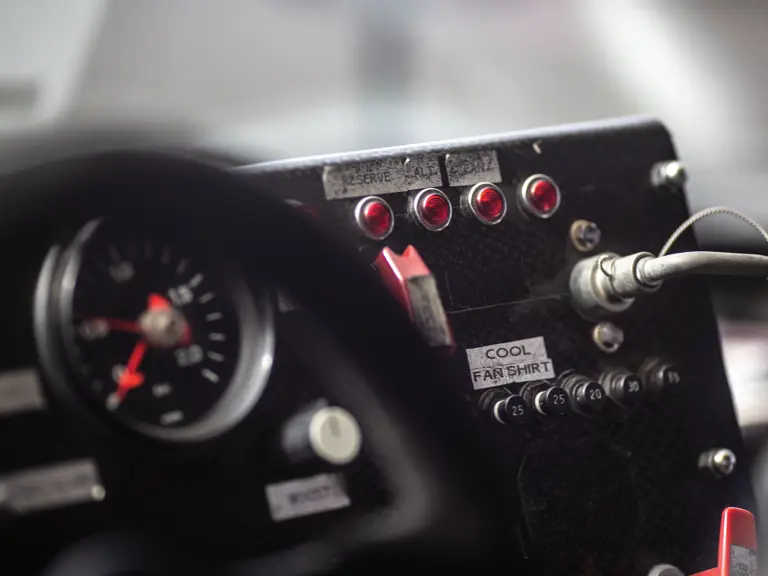








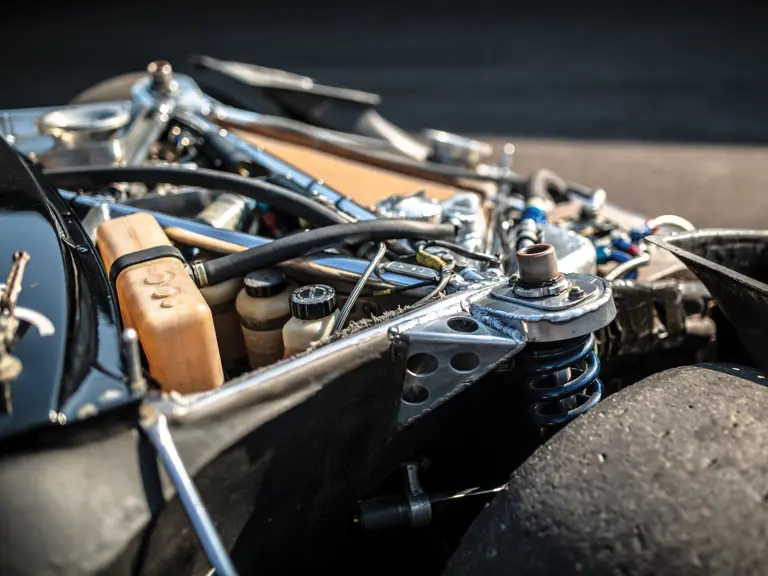

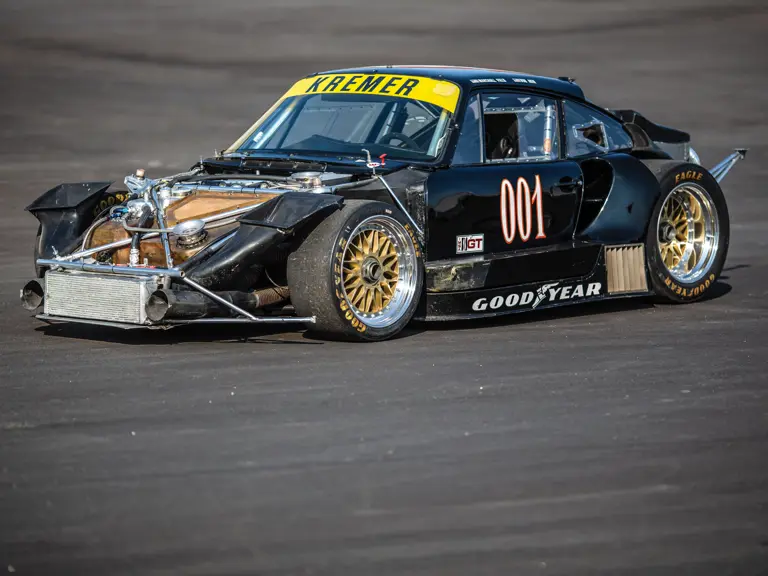



 | Atlanta, Georgia
| Atlanta, Georgia



